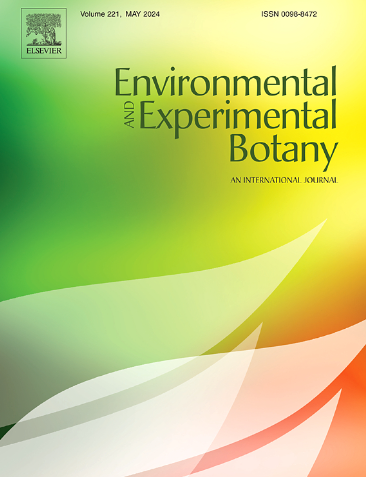Photosynthetic and biochemical responses to multiple abiotic stresses in Deschampsia antarctica, Poa pratensis, and Triticum aestivum
IF 4.7
2区 生物学
Q2 ENVIRONMENTAL SCIENCES
引用次数: 0
Abstract
Photosynthesis is inherently limited by abiotic stresses like extreme temperatures, water deficit, and nutrient deficiency. However, the combined impacts of these multiple stresses on photosynthetic capacity remain largely underexplored. This study investigates the effects of low temperature, drought, and nutrient scarcity on the photosynthetic responses of three distinct grass species: the polar Deschampsia antarctica (DA) from Antarctica, the cosmopolitan Poa pratensis (PP) from the Arctic, and the crop species Triticum aestivum (TA). Under optimal conditions, both DA and PP exhibited lower photosynthetic rates compared to TA. Crucially, when subjected to a combination of multiple abiotic stresses, DA demonstrated a significantly less pronounced photosynthetic decline than TA. This remarkable ability to maintain higher photosynthetic efficiency under suboptimal conditions not only boosts net carbon assimilation but also enhances overall plant performance in harsh environments. Our results reveal that DA's superior performance under multiple stress conditions is attributed to a unique combination of structural and biochemical traits. These include constitutively higher leaf mass per area (LMA) and cell wall hemicellulose content. Furthermore, DA showed a balanced strategy of reduced investment in photosynthetic machinery coupled with enhanced photoprotection and antioxidant status (indicated by an increased xanthophylls + carotene/chlorophylls ratio), a combination not observed in PP or TA. These findings underscore that DA possesses specific physiological adaptations, enabling it to successfully cope with simultaneous multiple abiotic stresses more effectively than PP and TA.
南极德尚、草地Poa pratensis和小麦(Triticum aestivum)对多重非生物胁迫的光合和生化响应
光合作用本质上受到非生物压力的限制,如极端温度、缺水和营养缺乏。然而,这些多重胁迫对光合能力的综合影响在很大程度上仍未得到充分研究。本文研究了低温、干旱和养分匮乏对三种不同的禾草物种的光合响应的影响:南极的极地Deschampsia antarctica (DA)、北极的世界性Poa pratensis (PP)和作物Triticum aestivum (TA)。在最佳条件下,与TA相比,DA和PP的光合速率均较低。至关重要的是,当受到多种非生物胁迫的组合时,DA的光合作用下降明显低于TA。这种在次优条件下保持较高光合效率的非凡能力不仅促进了净碳同化,而且提高了恶劣环境下植物的整体性能。我们的研究结果表明,DA在多种胁迫条件下的优异性能归因于其独特的结构和生化特性的结合。这些包括组成较高的叶面积质量(LMA)和细胞壁半纤维素含量。此外,DA表现出一种平衡的策略,即减少对光合机制的投资,同时增强光保护和抗氧化状态(通过增加叶黄素+胡萝卜素/叶绿素比率表明),而PP和TA没有观察到这种组合。这些发现强调了DA具有特定的生理适应性,使其能够比PP和TA更有效地成功应对同时发生的多种非生物胁迫。
本文章由计算机程序翻译,如有差异,请以英文原文为准。
求助全文
约1分钟内获得全文
求助全文
来源期刊

Environmental and Experimental Botany
环境科学-环境科学
CiteScore
9.30
自引率
5.30%
发文量
342
审稿时长
26 days
期刊介绍:
Environmental and Experimental Botany (EEB) publishes research papers on the physical, chemical, biological, molecular mechanisms and processes involved in the responses of plants to their environment.
In addition to research papers, the journal includes review articles. Submission is in agreement with the Editors-in-Chief.
The Journal also publishes special issues which are built by invited guest editors and are related to the main themes of EEB.
The areas covered by the Journal include:
(1) Responses of plants to heavy metals and pollutants
(2) Plant/water interactions (salinity, drought, flooding)
(3) Responses of plants to radiations ranging from UV-B to infrared
(4) Plant/atmosphere relations (ozone, CO2 , temperature)
(5) Global change impacts on plant ecophysiology
(6) Biotic interactions involving environmental factors.
 求助内容:
求助内容: 应助结果提醒方式:
应助结果提醒方式:


